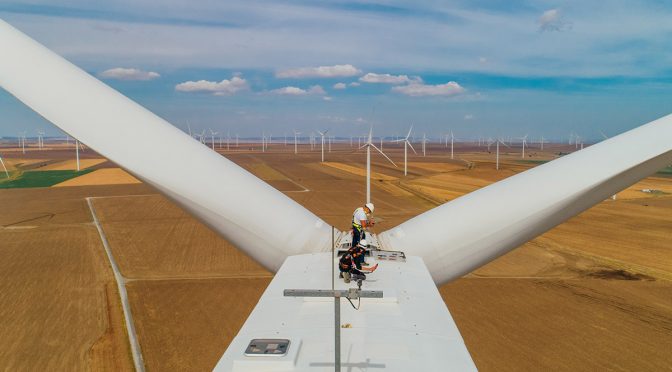We will begin the new decade with 27 new National Energy and Climate Plans – which EU Governments need to submit to Brussels by the end of this month. These Plans will define the shape and size of the wind markets you operate in for the next 10 years and will act as investment brochures mapping out how good each country is likely to be for us.
And now we start the decade with the EU’s new Green Deal, launched last week. This is a significant step in the right direction, for Europe and for wind energy. Let’s break down what’s in the Green Deal, and what it means for us.
First, the Green Deal is very good news for our industry and its ambitions. Central to it is a proposed European Climate Law: a legal enshrinement of Europe’s commitment to be carbon-neutral by 2050. This would be the first of its kind, anywhere. The proposal for the Law will come out in March 2020. We will keep you posted on this.
By the summer, the Commission will put forth proposals on how to boost Europe’s greenhouse gas emissions reduction target for 2030 from 40% today to between 50-55%. Again, this is good news for our industry.
Significantly, the Green Deal singles out offshore wind for its “enormous potential.” You will have seen the report we launched last month in Copenhagen on how Europe can reach 450 GW of offshore wind by 2050. The Green Deal reflects this level of ambition, and the European Commission plans to work out a full EU offshore strategy in 2020.
But the fact remains that onshore wind is going to be the dominant form of wind energy in the short term, and it needs policy support if it is going to play a leading role in the energy transition. Industry competitiveness will be a make-or-break issue for wind energy. So we welcome the news that, alongside the Green Deal the EU will adopt by March 2020 an industrial strategy on how to keep Europe’s industrial and technological leadership in the face of international competition. The strategy will give special attention to energy-intensive industries like steel and cement that serve as suppliers to sectors such as wind energy. The Commission will put forth a proposal to support zero-carbon steel-making processes in 2020. So climate-neutral wind towers are on the way.
The Commission will also be launching a strategy for smart sector integration: this will coordinate the energy sources to be used in decarbonising not just the power sector but vast swathes of the economy (e.g. in steel, buildings, transport, etc.) Decarbonisation of the economy is going to take a lot of energy – and it is unclear which energy sources are going to do it. Will it be done via electricity from renewables or gas? Or hydrogen? How much of each and under what circumstances? We will be monitoring this closely, and pushing for as much wind power as possible and, where most effective, renewables-based hydrogen.
We also welcome the Green Deal’s Sustainable Europe Investment Plan, 30% of which will be directed towards actions fighting climate change. As we have said many times, the energy transition cannot happen if it isn’t just, so it is good to see that the Investment Plan will include a new Just Transition Fund to help fossil-fuel intensive regions transition from coal to sustainable technologies. This is the best way to ensure a transition that is jobs-rich, publicly-supported, and fair for all Europeans.
Finally, let me wish you a very Merry Christmas on behalf of the entire WindEurope team. We are ready for a new decade of wind energy, and look forward to working with you in 2020.

Giles Dickson


